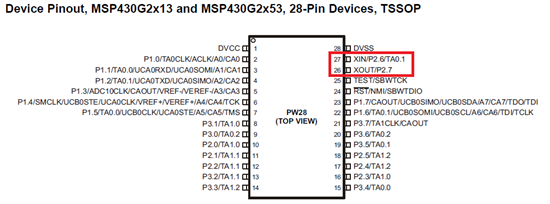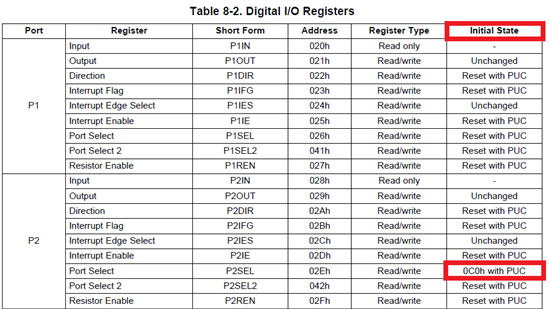I am trying to declare P2.6 and P2.7 as output
I am doing the following
P2DIR |= BIT6;
P2DIR |= BIT7;
and I am trying to write a 1 or a 0 on them as follows
P2OUT &= ~BIT6;
P2OUT |= BIT7;
or
P2OUT &= ~BIT7;
P2OUT |= BIT6;
Is not working. Does anyone has a suggestion why it not be working?
Should I dissable something going on in the pins..?
Are those pins used as something else as default?
Regards,
Daniel Hercules



